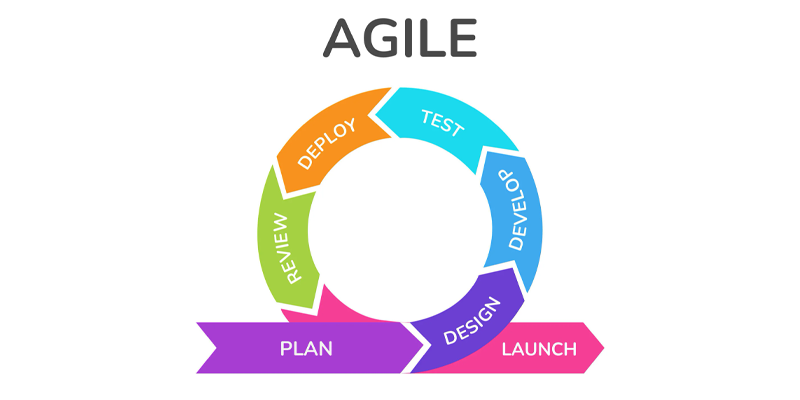Legacy systems have long been the backbone of many organizations, providing the necessary infrastructure to support critical business processes. However, as technology continues to evolve at an unprecedented pace, these systems are becoming outdated and unable to keep up with the demands of the modern business landscape. In order to stay competitive and efficient, organizations must prioritize the modernization of their legacy systems.
The Challenges of Legacy Systems
Legacy systems, while reliable in their time, are often built on outdated technologies that are no longer supported or compatible with newer systems. This can lead to a range of challenges, including:
- Limited scalability: Legacy systems are often unable to handle the increasing volume of data and transactions that modern businesses generate.
- Lack of integration: Legacy systems are typically isolated and unable to seamlessly communicate with other systems, hindering data sharing and collaboration.
- Security vulnerabilities: Outdated systems are more susceptible to cyber threats and may lack the necessary security measures to protect sensitive data.
- Inefficiency and high maintenance costs: Legacy systems require extensive manual processes and maintenance, resulting in higher operational costs and reduced productivity.
The Benefits of Modernization
Modernizing legacy systems offers a wide range of benefits that can have a significant impact on an organization’s overall performance and competitiveness:
Improved Efficiency and Productivity
Modern systems are designed to streamline processes, automate tasks, and eliminate manual interventions. By replacing legacy systems with modern solutions, organizations can reduce human error, improve data accuracy, and increase overall efficiency. This allows employees to focus on more strategic tasks and enhances productivity across the organization.
Enhanced Scalability and Flexibility
Legacy systems often struggle to handle the increasing demands of growing businesses. Modernization enables organizations to leverage scalable and flexible technologies that can adapt to changing needs. Cloud-based solutions, for example, provide the scalability required to accommodate growing data volumes and user demands, while also offering the flexibility to easily integrate with other systems.
Improved Data Management and Analytics
Modern systems are equipped with advanced data management and analytics capabilities, allowing organizations to gain valuable insights from their data. By modernizing legacy systems, organizations can harness the power of big data, artificial intelligence, and machine learning to make informed business decisions, identify trends, and predict future outcomes.
Enhanced Security and Compliance
Legacy systems are often more vulnerable to security breaches and may lack the necessary security features to protect against modern cyber threats. Modern systems, on the other hand, are built with robust security measures in mind, ensuring that sensitive data is protected and compliance requirements are met. This helps organizations mitigate risks and maintain the trust of their customers.
Key Considerations for Legacy System Modernization
While the benefits of legacy system modernization are clear, the process can be complex and require careful planning. Here are some key considerations to keep in mind:
Define Objectives and Priorities
Clearly define the objectives and priorities of the modernization effort. Identify the specific pain points and areas of improvement that need to be addressed. This will help guide the modernization strategy and ensure that the right solutions are implemented.
Assess the Current System
Conduct a thorough assessment of the existing legacy system to identify its strengths, weaknesses, and dependencies. This will help determine the best approach for modernization, whether it involves a complete system replacement or a phased migration.
Choose the Right Technology Stack
Selecting the right technology stack is crucial for successful modernization. Consider factors such as scalability, compatibility, ease of integration, and long-term support. Collaborate with IT experts to evaluate different options and choose the most suitable solution for your organization’s needs.
Plan for Data Migration and Integration
Data migration and integration can be complex and time-consuming processes. Develop a comprehensive plan to ensure a smooth transition from the legacy system to the modernized solution. Consider data cleansing, mapping, and validation to ensure data integrity throughout the migration process.
Invest in Training and Change Management
Modernizing legacy systems often involves a significant change in workflows and processes. Invest in training and change management initiatives to ensure that employees are equipped with the necessary skills and knowledge to adapt to the new system. This will help minimize resistance to change and maximize the benefits of modernization.
Conclusion
Legacy system modernization is not just a matter of keeping up with the latest technology trends; it is a strategic imperative for organizations looking to remain competitive in today’s digital landscape. By embracing modernization, organizations can unlock a range of benefits, from improved efficiency and productivity to enhanced security and compliance. With careful planning and the right approach, legacy system modernization can pave the way for a more agile, innovative, and successful future.





